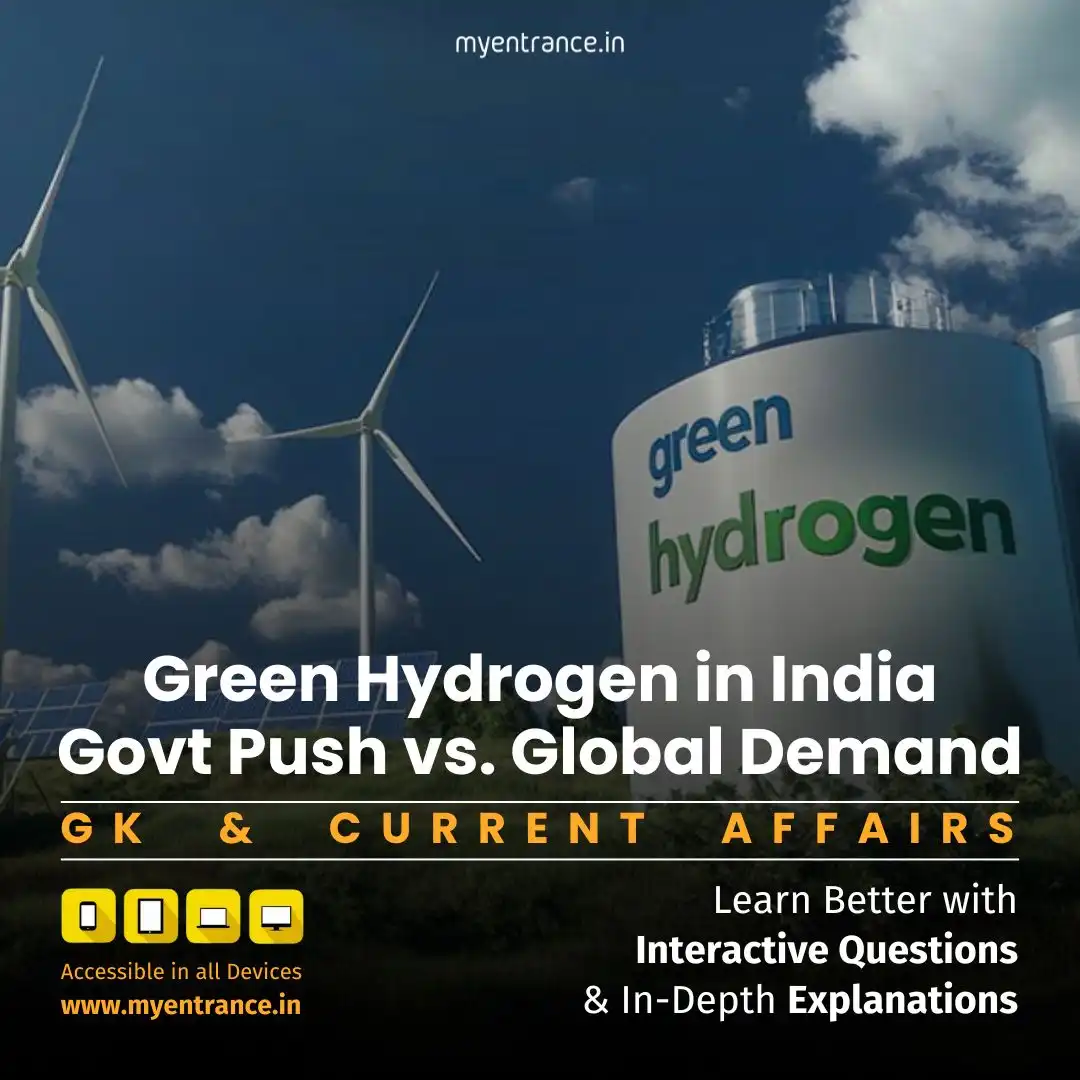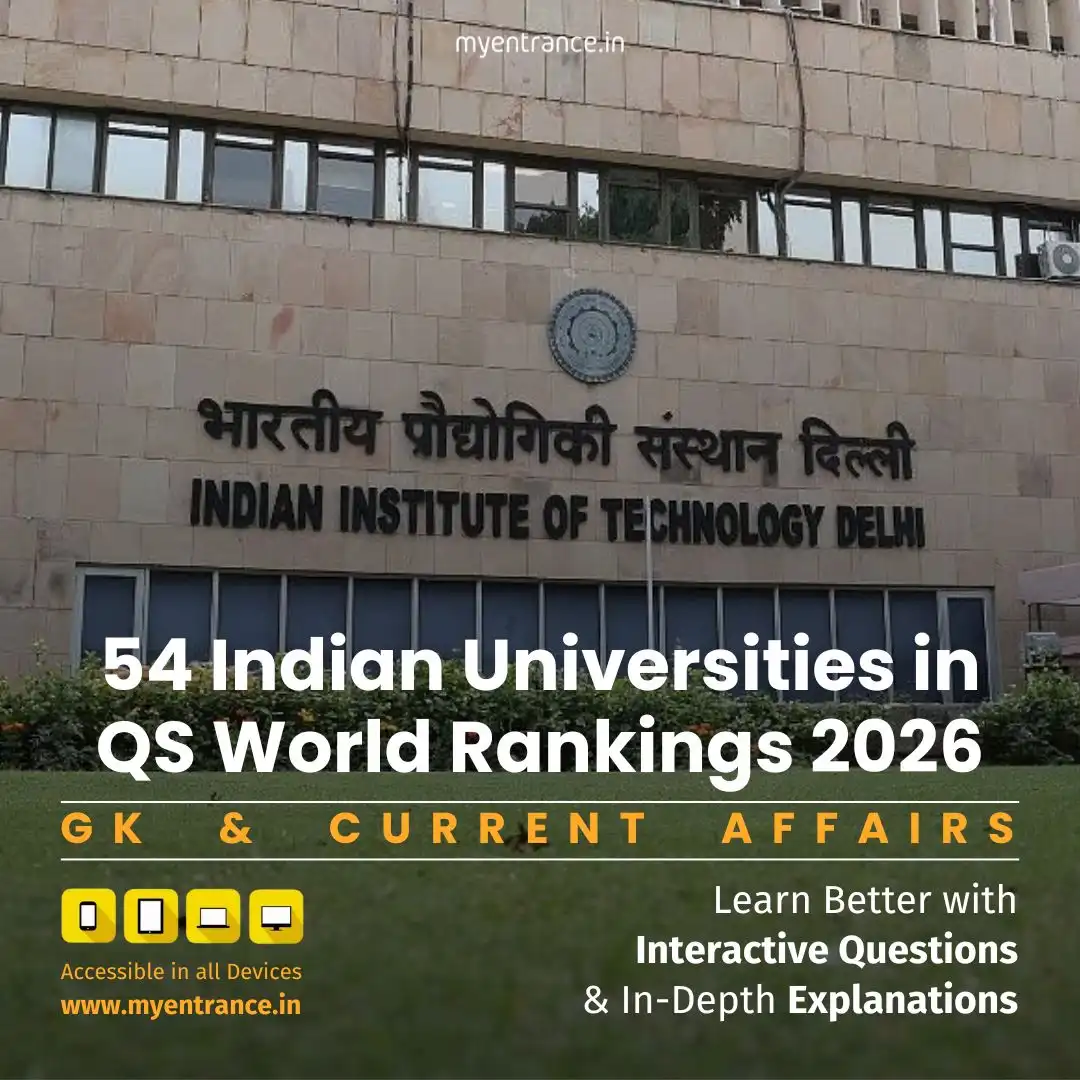Select Language
Green Hydrogen in India: Govt Push vs. Global Demand Challenges | Exam Focus
India’s green hydrogen sector holds immense promise for clean energy and economic growth, backed by strong government initiatives. However, slowing global demand and policy uncertainties threaten to delay its potential.
India’s Green Hydrogen Ambition: High Hopes, Tough Realities
While the Indian government and industry leaders champion green hydrogen as a future energy powerhouse, weak global demand and policy flip-flops in key markets are hitting the brakes. Export slowdowns—driven by geopolitical tensions and stalled incentives abroad—are forcing a rethink of expansion timelines.
What Makes Hydrogen “Green”?
Grey Hydrogen: Made from fossil fuels (usually natural gas), releasing CO₂.
Blue Hydrogen: Also fossil-based, but captures ~80% of emitted CO₂.
Green Hydrogen: Uses renewable energy (solar/wind) to split water (H₂O) via electrolysers—zero emissions.
India’s National Green Hydrogen Mission: Key Goals
Target: Produce 5 million metric tonnes (MMT) annually by 2030.
Funding: ₹19,744 crore support.
SIGHT Programme: Boosts green hydrogen production and electrolyser manufacturing.
Why Export Demand is Stalling
US Policy Uncertainty: Trump’s proposed “Big Beautiful Bill” threatens the Inflation Reduction Act (IRA), which offers tax credits for low-carbon hydrogen.
High Costs: Green hydrogen costs $4-5/kg vs. grey hydrogen’s $2.3-2.5/kg.
Infrastructure Gaps: Ports, pipelines, and storage for hydrogen/ammonia remain underdeveloped.
Government’s Counter-Strategy
EU Partnerships: Talks with Rotterdam & Antwerp ports for smoother green ammonia exports.
Trade Deals: Pushing for reduced import duties via FTAs with Europe.
Certification Scheme: Developing standards to verify “green” credentials for global acceptance.
Carbon Credits & India’s CCTS
Carbon credits let polluters offset emissions by funding green projects. India’s Carbon Credit Trading Scheme (CCTS) aims to:
Create a domestic carbon market.
Incentivize emission cuts by industries.
Generate revenue for green hydrogen projects.
5 Immediate Fixes (CII-Bain Report)
Blending: Mix small green hydrogen percentages into grey H₂/natural gas for refineries, fertilisers, and city gas.
Niche Substitution: Target sectors like glass/ceramics where switching is cost-neutral.
Public Procurement: Prioritise green steel/ammonia in govt projects.
Boost Financing: Lower interest rates for green H₂ projects.
Fast-Track Infrastructure: Develop pipelines, storage, and port facilities.
Key Challenges Ahead
Cost Competitiveness: Bridging the $2/kg price gap with grey hydrogen.
Global Policy Volatility: US/EU incentives crucial for export demand.
Certification Clarity: Ensuring global recognition of India’s green H₂ standards.
Sample Q&A for Exam Prep:
Q1: What distinguishes green hydrogen from grey and blue hydrogen?
Ans: Green hydrogen uses renewable energy for electrolysis (zero emissions). Grey H₂ relies on fossil fuels without carbon capture, while blue H₂ captures ~80% of emitted CO₂.
Q2: What is the production target under India’s National Green Hydrogen Mission (2023)?
Ans: 5 million metric tonnes (MMT) per year by 2030.
Q3: Why is export demand for India’s green hydrogen slowing down?
Ans: Geopolitical tensions, stalled US incentives (IRA), and high production costs ($4-5/kg vs. $2.3-2.5/kg for grey H₂).
Q4: How does India’s Carbon Credit Trading Scheme (CCTS) support green hydrogen?
Ans: It creates a market for carbon credits, letting industries fund emission-reduction projects (like green H₂) to offset their pollution.
Q5: Name two demand-side strategies to boost green hydrogen adoption in India (CII Report).
Ans: (i) Blending green H₂ into grey hydrogen/gas supplies for refineries/fertilisers; (ii) Govt procurement of green steel/ammonia.
Most Predicted Questions
Comprehensive study materials, Expert-guided tips & tricks, Mock tests and instant results.
Start your SSC, NIFT, NID, FDDI, PSC journey today with MyEntrance, your ultimate online coaching platform.
















